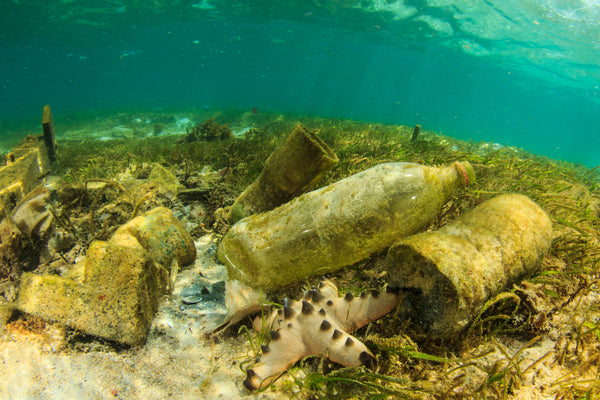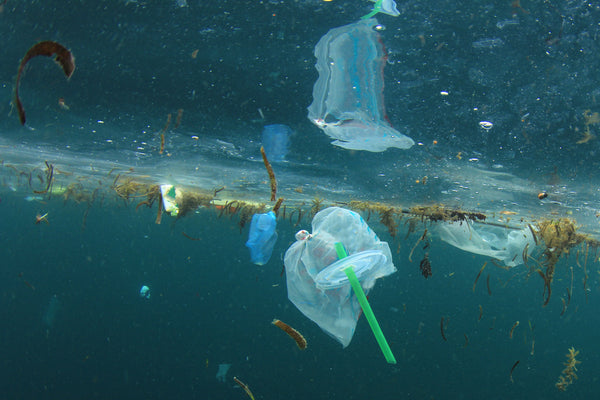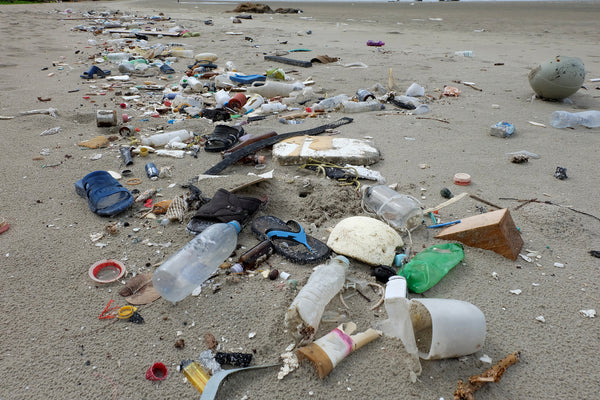When you gaze out onto the ocean, your mind probably thinks of the glorious marine life, the vast depths, and wonder of coral reefs and dolphins. Something you might not think of though is the huge amounts of plastic pollution floating, sinking, and decomposing in the ocean.
It’s a hard concept to grasp. Even though you might not see heaps upon heaps of plastic pollution in the ocean, it’s there, and it’s dramatically altering the lives of the marine animals that call the sea home.
If you’re unaware of plastic pollution -- both what it is, exactly, and the amounts that are piling up in our oceans -- you’ve come to the right place. We’re going to explain the origin of plastic pollution, how it piles up in our oceans, and the steps you can take to reduce it.
The problem is getting worse and worse every day. It’s only with calculated steps, strategic planning, of the dispersion of knowledge that we can help to fight plastic pollution in our vast waters.
Exactly How Much Trash Is In The Ocean?

Consider how much the world population is growing every day. Now consider the constantly increasing amount of trash the population is producing. We live lifestyles that are on-the-go, touch-of-a-button, and too-fast-paced, which naturally -- but unfortunately -- leads to an increasing amount of the plastic pollution that’s growing around us. After all, plastic, from water bottles to plastic bags, makes it much easier to grab things and go
Some experts believe upwards of 300 million tons of plastic are consumed each year.
Even more unfortunate than the sheer volume of plastic produced, much of that plastic makes its way into our oceans, dramatically affecting the plants and animals that call our seas home.
As Markus Eriksen told National Geographic:
This is relatively new if you think about plastic. Only since the 1950s [have] consumers [used] plastics. Now, a half-century later, we are seeing an abundant accumulation of microplastics from all single-use, throwaway plastics like bags, bottles, bottle caps, kitchen utensils. I have pulled cigarette lighters from hundreds of bird skeletons.
In fact, there are huge areas within the ocean where plastic has gathered and begun to negatively impact the natural environment of the ocean, creating significant issues for wildlife, plants, and even the human population.
When it comes to determining how much trash is in the ocean, it’s hard to calculate, although it’s fairly standard and widely accepted that there are millions of tons of debris floating around in our waters -- most of that being plastic.
Sometimes, the negative effects are obvious. For people who live near or on coast lines, it’s not uncommon to see bottles, cans, lids, straws, and bags floating up onto the shore every single day.
As unsettling as that is in itself, the problem goes much deeper. There’s an overwhelming amount of plastic pollution occuring out at sea, as evident with the Garbage Patch in the Pacific Ocean. What’s worse? Sometimes, you can’t even see the pollution that’s made its home in our water, as microscopic plastic pollution is not visible to the naked eye.
How Plastic Gets Into The Ocean

It’s hard to imagine life without plastic products. There’s plastic in your throw-away straws, plastic bottles, plastic keyboards, plastic picture frames. Everywhere you look, plastic is rearing its ugly head. It’s an inescapable epidemic, and it continues to surround us every day.
So, it’s no wonder that our plastic pollution is getting into the ocean. Tash can be carried to the ocean in rivers, or when it’s swept away from the beach. It can also be dumped from offshore platforms, despite the fact that this has been banned since 1988. But that’s not all. Microplastics can enter the ocean when litter and trash are blown in by the wind, even if it’s in a landfill or properly disposed of.
Additionally, micro-plastics, made up of synthetic fibers and beads that are found in personal hygiene products have been known to harm marine life if they consume them In fact, too many microplastics can accumulate toxic chemicals in a person’s or animal's bloodstream.
What Steps Can We Take?

It’s frightening, isn’t it? If no measures are taken, we can anticipate that the Great Garbage Patch of the Pacific will grow larger, that the marine life population in our oceans will dwindle, and that we’ll continue to kill off and strangle the plants and wildlife that populate our oceans.
Unless, that is, we take the necessary steps to prevent this from happening.
So, how can we reduce the plastic pollution in our oceans? What can we each do, on a daily basis, to stop this issue from continuing? Surprisingly enough, small, dedicated efforts are often enough to make an enormous difference for the health of the ocean and its inhabitants.
For example, one of the best -- and easiest methods -- is to stop buying plastic water bottles. Although they’re certainly convenient, close to 20 billion plastic bottles are tossed in the trash every single year, and a good percentage of those bottles end up in the ocean. Opt out for a reusable bottle to carry with you and never be subject to the plastic bottle risks again.
Another great method for ridding the ocean of plastics is to wean yourself off disposable plastics. This one, unfortunately, is a bit more difficult. We live in a grab-and-go, fast-paced world, and weaning yourself away from plastics will take time, patience, and thoughtfulness. But it can start simply.
For example, stop using plastic grocery bags at the store and bring in your own reusable bags. Forget disposable cutlery, plastic straws, and coffee cup lids. Say goodbye to plastic wrap, too. All of these small efforts will make a huge difference for the ocean.
But what about microplastics? For this, we suggest ridding yourself of your microbeads. Microbeads are the tiny, plastic scrubbers that are in beauty products like face wash and toothpaste. They seem harmless, and of course they help keep you clean, but they’re so tiny that they’re able to slip through water treatment plants, out to the oceans, and be ingested by animals and muck up our oceans. Don’t want to give up your exfoliation? Try products with natural exfoliants like sand or oatmeal -- you can probably make them on your own!
Of course, there are other steps you can take, too, like recycling, buying secondhand items to reduce the need for new plastics, and encouraging manufacturers in your area -- and beyond -- to consider how they’re using and disposing of their plastic materials.
Plastic Pollution, Marine Life, and You

The world’s population is only going to continue to increase, which means that our consumption, use, and disposing of plastic products will follow suit -- unless we make a change. Currently, there are millions of tons of garbage -- mostly plastic -- filling the oceans.
This garbage is accumulating in giant patches, clogging up our oceans, and harming the plants and animals that inhabit the seas. It’s also possible that our garbage issue in our oceans will get so bad, it’ll begin to affect the human race, too.
Plastic is a useful material, there’s no way to argue it’s not, but it’s a dangerous component made of toxic chemicals that are known to cause illness and pose dangers to the animals that accidentally ingest it.
Plastic, though durable, is not biodegradable, and it causes great harm to our environment in the form of air, water, and land pollution.
There are ways to combat this, though. Slow down, take a breath, and consider the ways you can fight plastic pollution in the ocean. Take time combing your local beach to pick up litter that may have made its home in the sand, get involved with an organization that’s dedicated to fighting the battles of water pollution, and make tiny changes in your daily routine (like cutting out plastic completely) in order to be the difference the oceans need.
